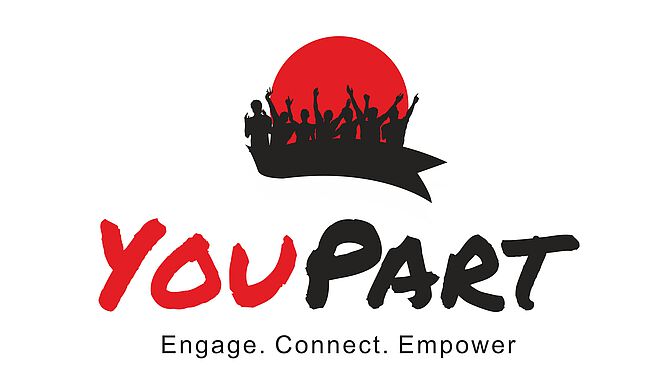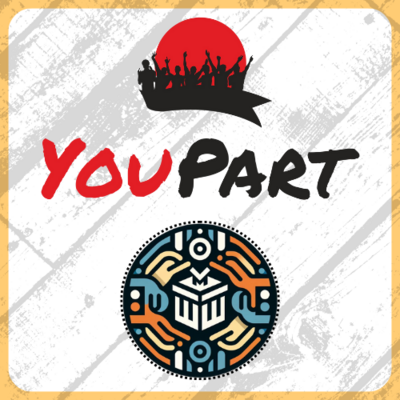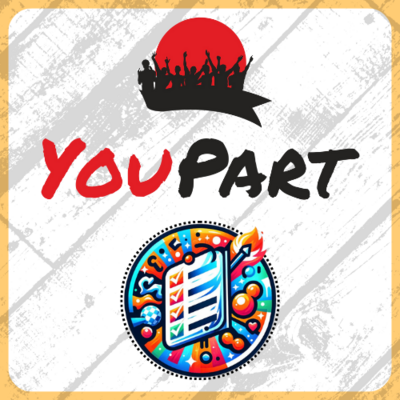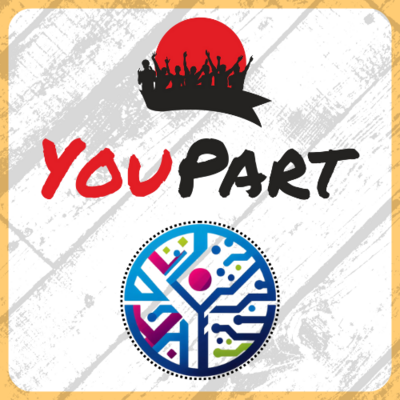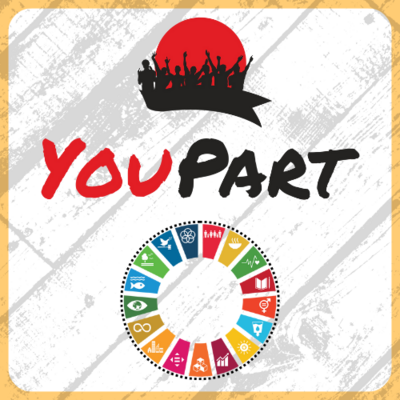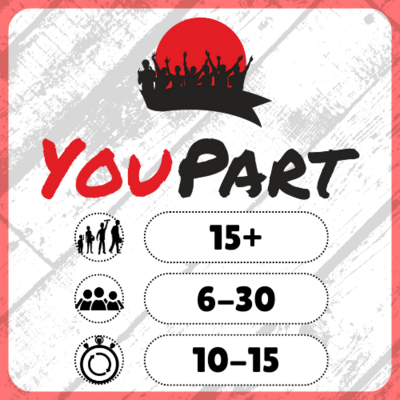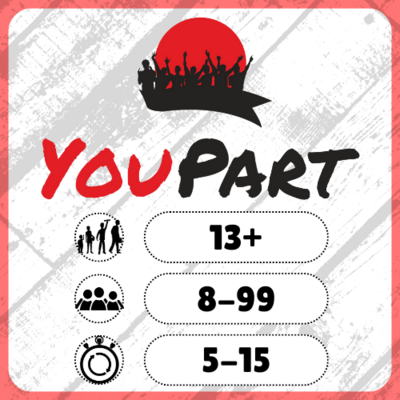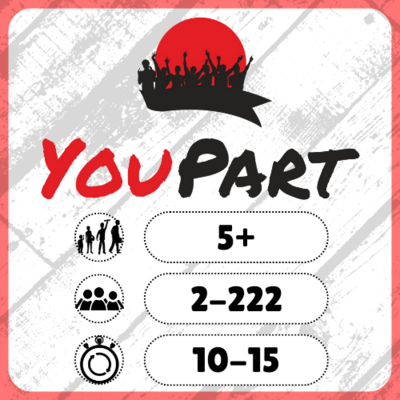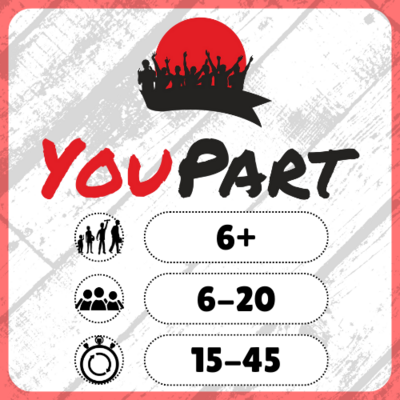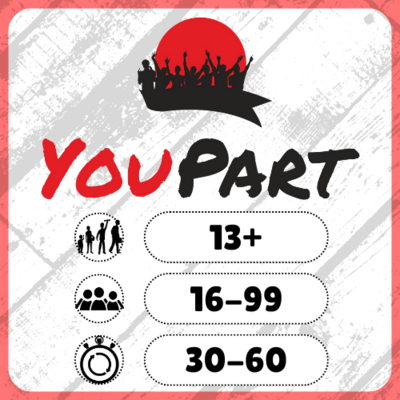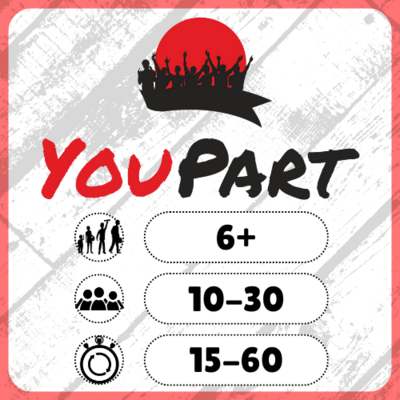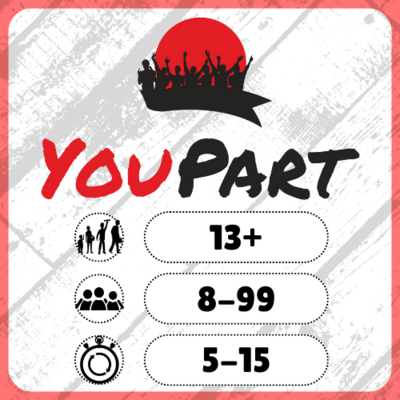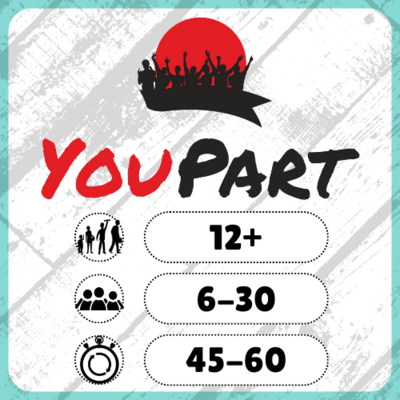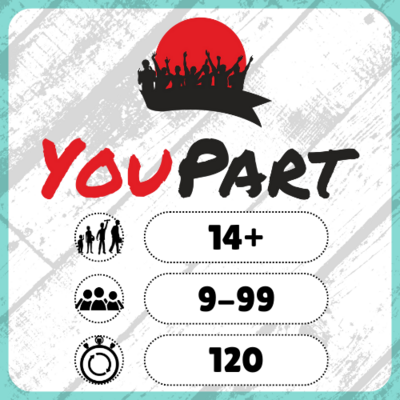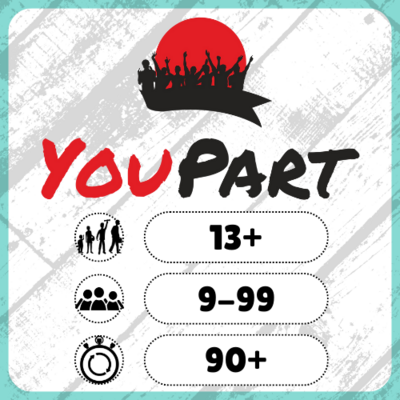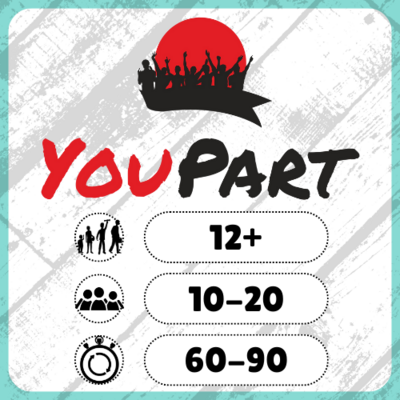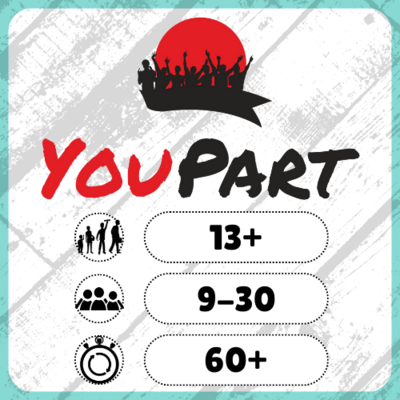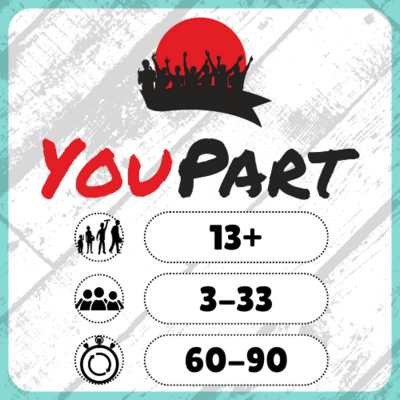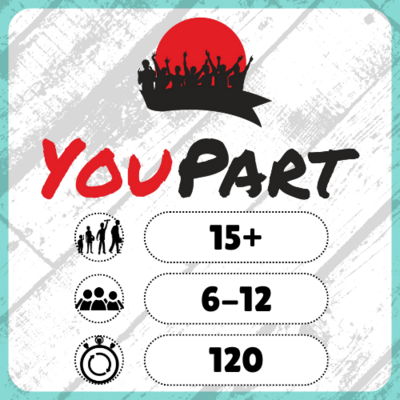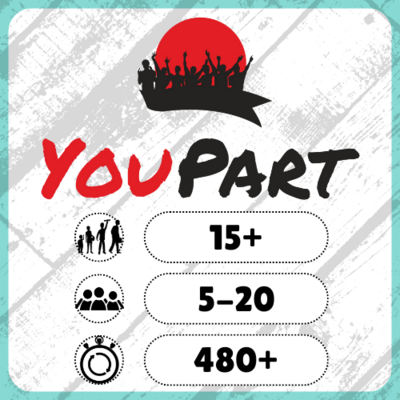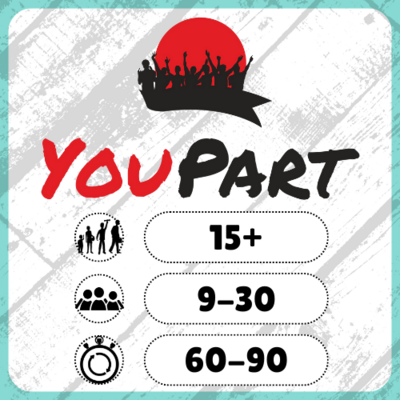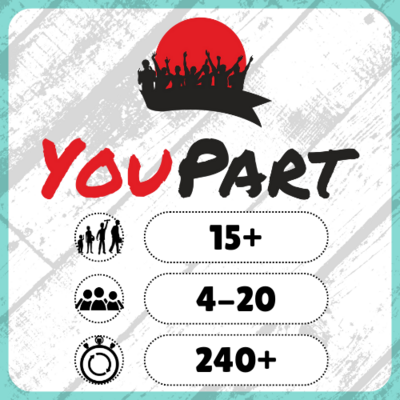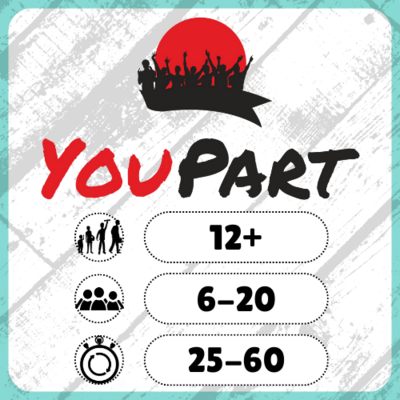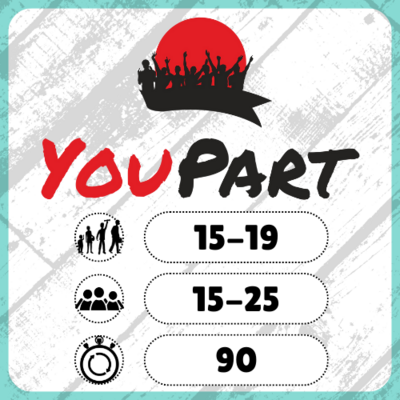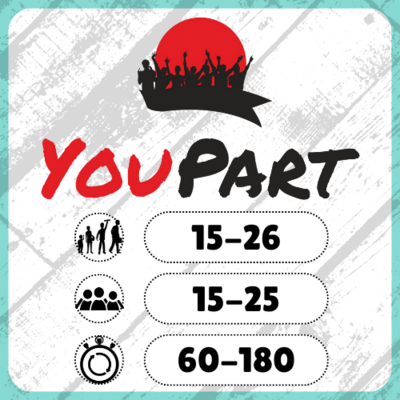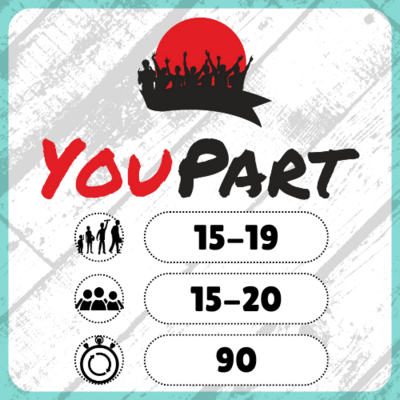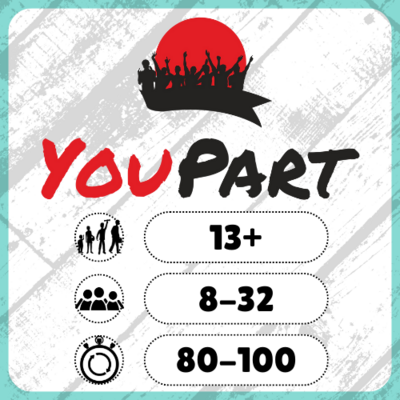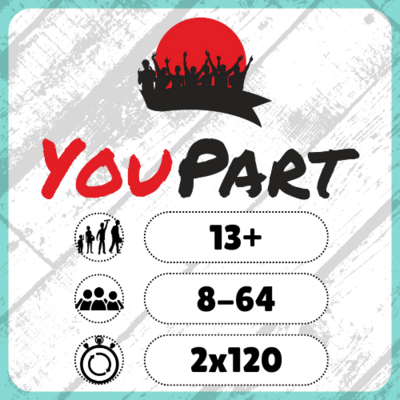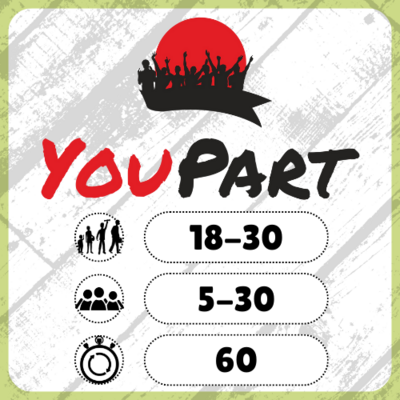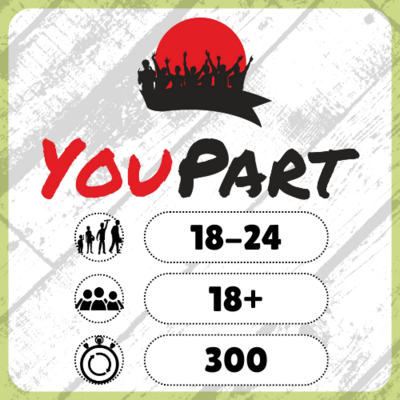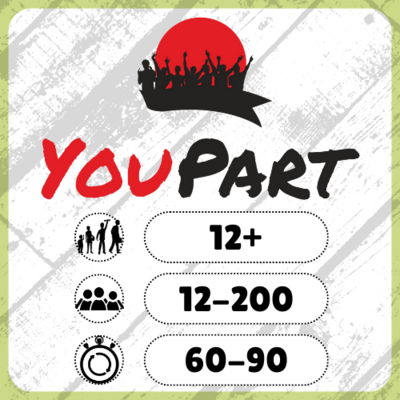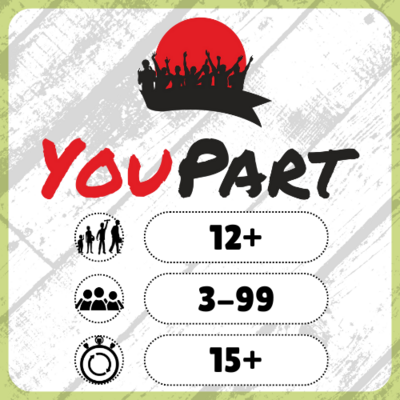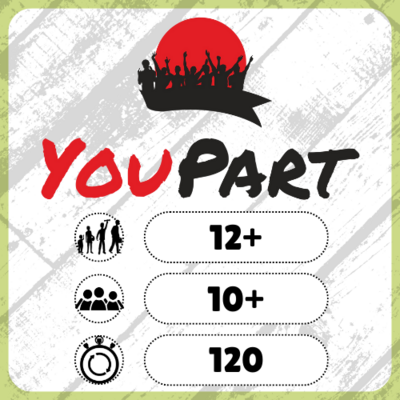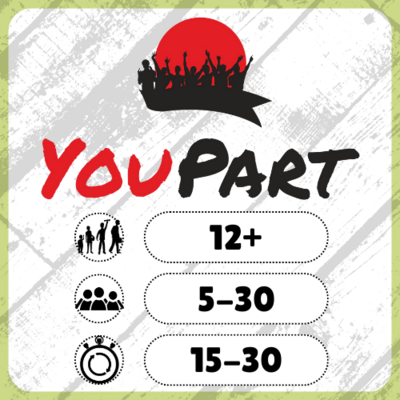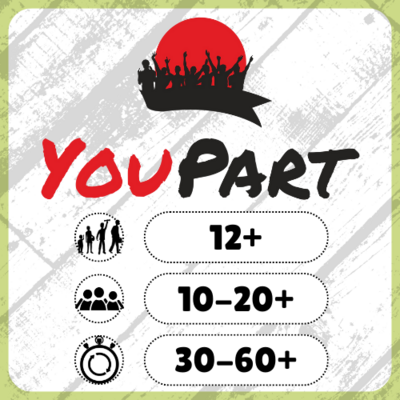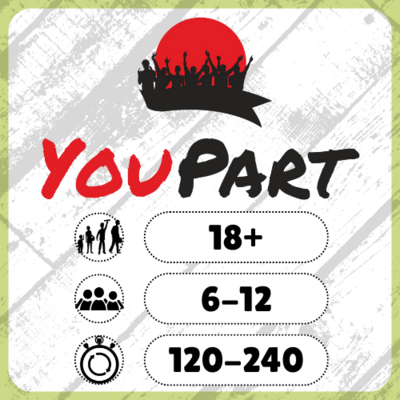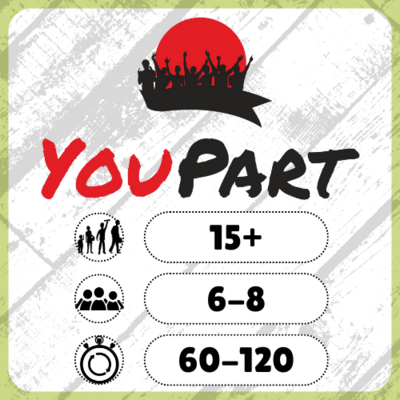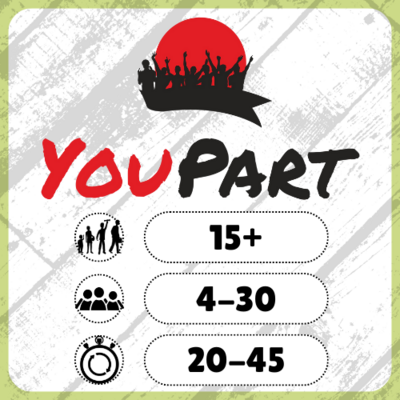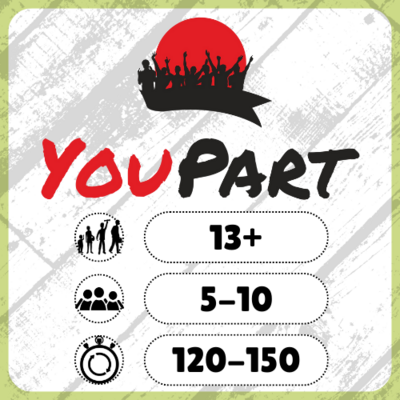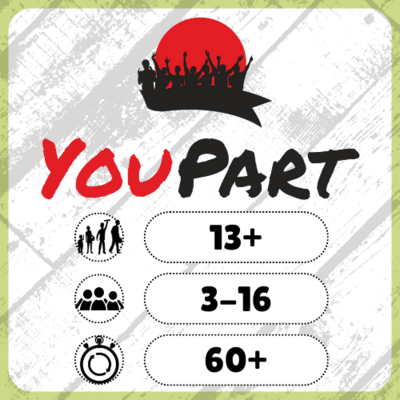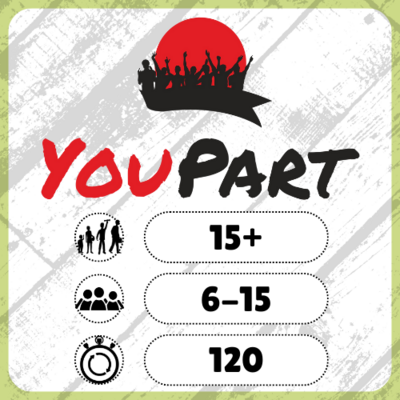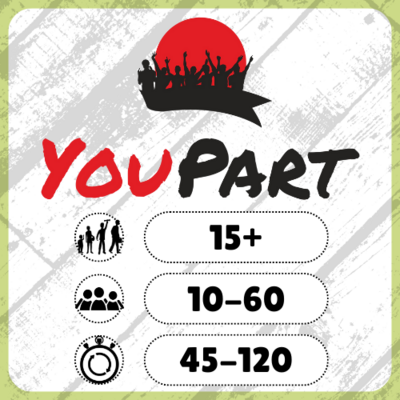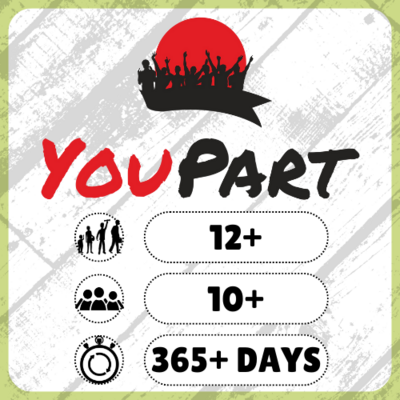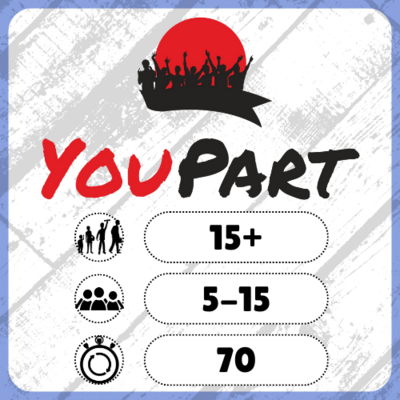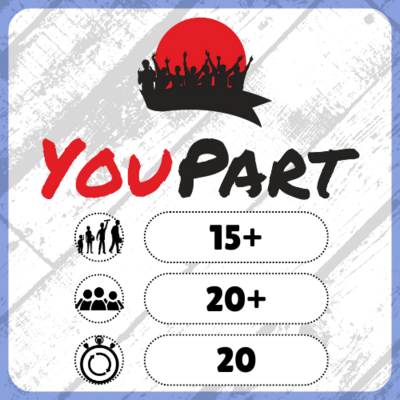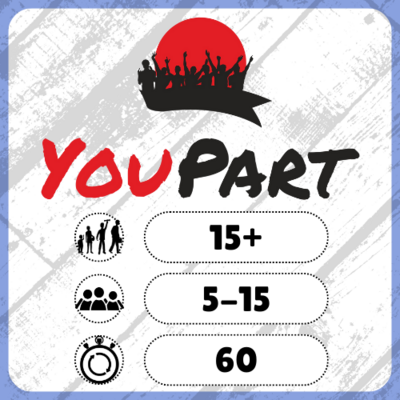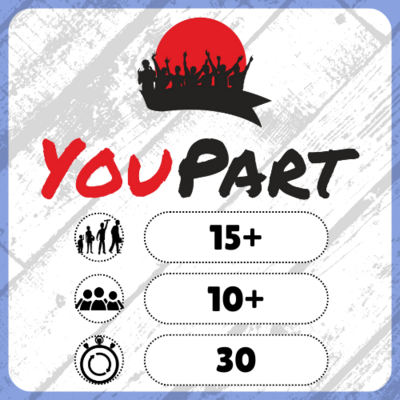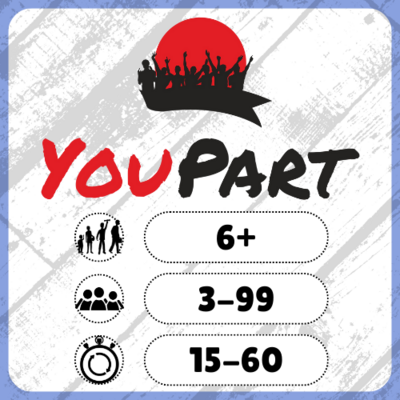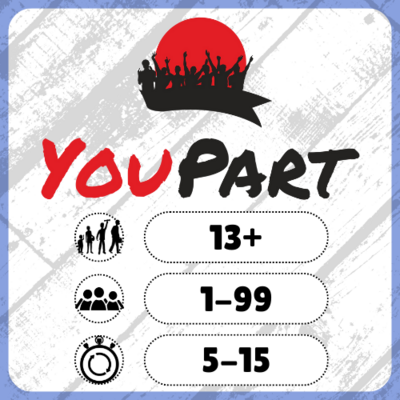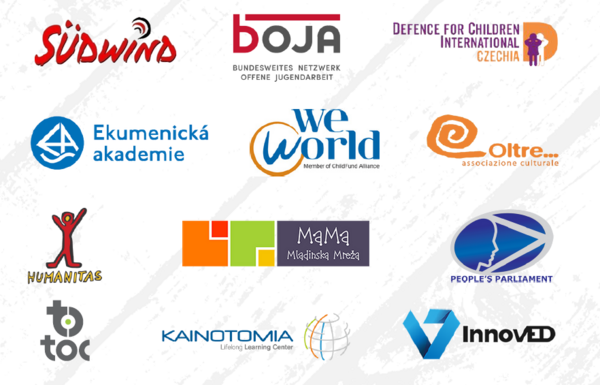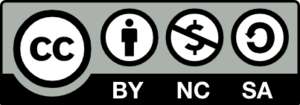DOBRODOŠLI V DIGITALNI ZBIRKI ORODIJ YOUPART
Digitalna zbirka orodij za državljansko vzgojo in participacijo v mladinskem delu YouPart ponuja praktična gradiva za vse, ki delajo z mladimi. Zbirka predstavlja rezultat sodelovanja 12 nevladnih in mladinskih organizacij iz 6 držav: Avstrije, Češke, Grčije, Italije, Slovenije in Srbije, ki so se povezale v okviru Erasmus+ projekta za participacijo mladih »YouPart – Engage, Connect, Empower«.
V evropskem letu mladih 2022 so se mladi Evropejci in Evropejke iz vseh 6 partnerskih držav pridružili projektu YouPart ne le zato, da bi razpravljali o participaciji in pravicah mladih, temveč da bi besede "angažirati", "povezati" in "opolnomočiti" preizkusili tudi v praksi. Projekt je bil namenjen zlasti mladim, ki imajo omejen dostop do politične participacije, katerih glasovi so v družbi in politiki manj slišani - vendar imajo veliko za povedati. Najprej se je več kot 150 udeležencev in udeleženk v starosti med 13 in 24 let zbralo na lokalnih in nacionalnih delavnicah. Nato se je 60 mladih skupaj s predstavniki in predstavnicami partnerskih organizacij srečalo na dveh mladinskih konferencah YouPart na Dunaju in v Pragi. V okviru teh konferenc so se osebno spoznali ter skupaj razpravljali o idejah in pripravljali zahteve, naslovljene na politične odločevalce na nacionalni in evropski ravni. Decembra 2022 so svoje evropske mladinske zahteve YouPart predstavili zainteresiranim evropskim poslancem in poslankam v EU parlamentu v Bruslju.
Številne aktivnosti, ki smo jih preizkusili in prilagodili na delavnicah in mladinskih konferencah YouPart, so vključene v predstavljeno zbirko orodij. Nekatere aktivnosti smo projektni partnerji že preizkusili v vsakdanjem mladinskem delu v vseh šestih državah. Z odprtim mladinskim delom, ki temelji na prostovoljnem pristopu, lahko dobro prepoznamo potrebe in želje mladih ter uporabimo raznolike nasvete in trike za spodbujanje mladih, zlasti tistih, ki so v mnogih pogledih prikrajšani. Povečanje ozaveščenosti mladih o demokratičnih političnih procesih in spodbujanje njihovega zanimanja za te procese, omogočanje participacije in podpora državljanskemu udejstvovanju mladih lahko pogosto predstavljajo velik izziv. Zato vam lahko YouPart zbirka z raznolikimi metodami in aktivnostmi pride prav pri mladinskem delu. Da bi oblikovali čimbolj praktično zasnovano in uporabno digitalno zbirko orodij, smo si sodelujoči partnerji med letoma 2023 in 2024 izmenjali številne izkušnje, znanja, ideje in povratne informacije, ki smo jih dobili od mladih.
KAKO UPORABLJATI DIGITALNO ZBIRKO ORODIJ YOUPART?
Digitalna zbirka orodij YouPart vsebuje 48 enot, ki so zbrane v 5 poglavjih: 1. Teorija, 2. Energizerji, 3. Delavnice in druge aktivnosti, 4. Metode, 5. Povratne informacije in evalvacija. V 1. poglavju zbirka ponuja teoretične smernice. V naslednjih poglavjih se osredotočamo na praktične aktivnosti, saj so kratki energizerji vedno dobrodošel uvod v delavnice in druge daljše aktivnosti, ki so predstavljene v naslednjih poglavjih. Metode, ki jih lahko uporabite za obravnavanje različnih tem, so na voljo v 4. poglavju. V zadnjem poglavju pa smo zbrali aktivnosti za pridobivanje povratnih informacij in orodja za evalvacijo izvedenih aktivnosti.
Digitalna zbirka orodij YouPart ponuja navodila tako za primere aktivnosti, ki smo jih izbrali med našimi najboljšimi praksami, kot tudi za inovativne aktivnosti, ki smo jih zasnovali tekom projekta. Predstavljene aktivnosti je mogoče izvajati v zaprtih prostorih in/ali na prostem in/ali digitalno: od nekaterih uvodnih aktivnosti, ki ne zahtevajo veliko priprav in jih je včasih mogoče organizirati v kratkem času, do bolj kompleksnih delavnic, ki lahko potekajo več dni.
Ko kliknete na posamezno enoto, boste preusmerjeni na spletno stran s ključnimi informacijami o aktivnosti ter možnostjo prenosa datoteke PDF, ki vsebuje podrobne informacije in navodila za izvedbo. Informacije glede starosti udeležencev, velikosti skupine in trajanja aktivnosti (v minutah) naj vam služijo kot podlaga za orientacijo, vendar jih lahko po potrebi prilagodite vašim skupinam. Številne aktivnosti lahko po potrebi kombinirate in spreminjate, modularna struktura zbirke orodij YouPart pa vas vabi, da poiščete navdih za lastno zasnovo delavnice.
Ne glede na to, ali gre za participacijo mladih na lokalni, regionalni, nacionalni ali evropski ravni, so avtorji in avtorice digitalne zbirke orodij YouPart prepričani, da lahko ta vsakomur, ki dela z mladimi, ponudi nekaj uporabnega.

